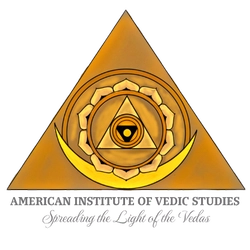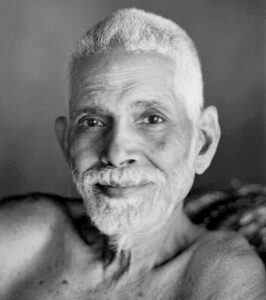By Yogi Baba Prem
While yoga has been growing within western culture for almost one hundred years, within the United States one can observe a tremendous surge in popularity since the sixties, to the most recent indicators suggesting that millions of Americans now practice yoga in some form or another.
While the roots of yoga are most certainly linked with Hinduism and it’s most important teachings known as the Vedas, or books of knowledge; the average yoga student has little exposure or awareness of the ancient roots to yoga. While many students are looking to escape religion, or certainly not looking for a new religion; for many, at best, they are open to new age spirituality. While this new type of spirituality borrows heavily from many of the great eastern traditions such as Hinduism, it is rare that they offer a comprehensive system of study. Often deities are relegated to a backseat within the new age philosophical model. The result has been a lessening of the understanding of deities and the important role they play within spiritual growth. The ultimate result being that this is becoming a world devoid of conscious understanding regarding deities. What are the place, role and relevance for these Vedic deities? Their timeless wisdom, spanning eternity, as recorded in the Vedas. Or are they to become forgotten myths from some distant ancient people. Will their relevance with yoga become an abandoned teaching, or are they waiting for each student to discover their secret meanings?
To explore this, one must learn to look at eastern teachings through eastern eyes. The literalist tradition, common in the west and relevant in the east, does not afford much opportunity to unlock the vast secrets held within the eastern traditions and the more familiar system of yoga. Western scholars tell us that yoga is one of 6 distinct traditions from the Indian subcontinent. But in reality these traditions were intended to blend, to cross the lines of demarcation so frequently used in scholarly circles. The main 6 traditions are in reality a part of much greater whole, which afforded different approaches to the same truth. The separation of these systems has lead to a decline in understanding and application of these powerful systems. This has resulted in deities being given a “backseat” role in many yoga centers. Often the western student wishes to merely confine deities to the realm of religion, whereas the eastern student and mystic realizes that the deities “blur” the lines to reality, and manifest in a variety of forms, and applications.
As an example, the Vedic deity Ushas literally means the dawn. But Ushas also symbolizes each person’s awakening to truth. Ushas is the principle operating each time we connect, realize, or gain some insight into our life. With this understanding of Ushas it becomes difficult to say that Ushas is not relevant. In reality, Ushas has a significant role within each person’s life, especially if they are oriented toward any type of personal growth or understanding. The Vedic battle between Indra and Vrtra, merely represents the battle between our higher and lower nature. Or some would say our spirit (soul) and ego. Both of these examples have relevance for most students of yoga. But as these teachings come from a different culture, we are often not familiar with the terms or we struggle with its symbolic representations. To deepen one’s understanding of this process I will use the following story:
Within Indian legend there was a story of a great sage named Vasishtha. He owned a cow named Nandini, who was trapped in a huge gorge. The sage appealed to Lord Shiva, and Shiva sent Sarasvati to flood the gorge so the cow could float free. For many students of yoga this story has little relevance, unless one understands the symbolism behind the story. The cow being trapped represents blocked knowledge. Shiva represents higher knowledge. Sarasvati represents inspiration. The release of the cow is the opened flow of knowledge through higher inspiration. While this is a simplistic view of the story, it does illustrate the deeper meaning. Literally an article could be written on the symbology of this story alone. While there could be numerous additional interpretations of this legend, the point I am trying to make is that we all have moments when creativity, or knowledge has difficulty flowing. We often seek inspiration to unlock the inner resources of the mind. Again these deities represent common cosmic principles and represent not just the mystical, but also the practical application of life principles. As the deities represent universal truths, they have universal application that transcends social and cultural differences. This view and way of looking at the world repeats itself frequently within the yoga tradition.
As the ancient yoga practitioners realized that the world was divine and a reflection of higher principle’s and truth. They would have been known as Animist. Not the animist of western scholars. The scholarly view of animist often portrayed ancient people as frightened by the sun, moon, night, and other common events. The true animists realized the divinity of life. They knew that each part played a role in the greater whole. They named postures after animals; elements and higher principle’s call deities. They recognized that deities represented physiological and psychological aspects of creation as well. They also knew that the deities represents higher principle’s, and/or principle’s of physics. As an example, modern physics recognized 3 states of matter as solid, liquid and gas.
These fundamental concepts are reflected in the chakra system within yoga. In this system each chakra is associated with an element. These elements move from dense (solid or earth) to gas (ether and air). Within this ancient tradition we find the building blocks of modern day physics.
Within the Atharva Veda, one can find teachings of modern day visualization and affirmation tools; with such quotes as, “My mind stands against disease.” Or from the Yajur Veda (Sukla version).
Preserve my life.
Assist/Preserve my prana (life-force).
Assist/preserve my vyana (circulating life-force).
Assist/preserve my sight.
Assist/preserve my ears [hearing].
Assist/preserve my speech, let it abound.
Be active in my mind.
Keep my soul.
[Keep] my light pure.
Yajur Veda XIV.17
This is a powerful affirmation for health and wellness.
Even electrical polarity was represented by the masculine and feminine principles. In fact, postures were divided into masculine and feminine postures based on their affect on the body and mind. Giving birth to the world’s first polarity therapy, which appears within the Ayurvedic tradition. Postures were recognized as heating and cooling as well. And an entire system of practice was developed around these very principles as well. All of these qualities have deities associated with them, representing a system that has more depth and complexity than our modern periodic table. The deities are combined in various mantras, breathing exercises and postures, with the same sophistication and precision as the modern chemist mixes formulas.
They recognized that the senses offered food (sensory experience) to the mind. And that the senses had a powerful impact on the activities, desires, and attractions of the mind. But more importantly they recognized that the different flows of consciousness emanated from more than just the mind as we see in a western sense. They realized that greater flows of consciousness flowed from the soul level and through the mind, ultimately looking to manifest on a physical level. These various flows of consciousness are Vedic deities.
A clear example of this is with the Vedic Deity Agni (fire). On a personal and physical level Agni is a very important teaching. As Agni manifests in the physical body as the digestive fire and metabolism, within Ayurveda this is called Jatharagni. There is also the fire of the mind, the ability to digest experience. This is also a form of Agni. So it is literally impossible to say that Agni is not important.
For modern day yoga practitioners, the oldest form of yoga we have in written form is “Vedic Yoga”. Vedic yoga is filled with deities and their practical application on a multitude of levels. Offering a variety of techniques depending on the consciousness and ability of the practitioner. While vedic yoga does not contain the postures commonly associated with yoga. It does contain mudras (hand positions) for meditation, mantra, pranayama (breathing exercises), and meditation itself. Vedic yoga contains many of the elements that are common within other systems of yoga. It has information and references to the kundalini, which is represented by the kundalini yoga tradition. It has the sun and moon of the Hatha yoga tradition. It contains wisdom representing the Jnana yoga tradition. Certainly the Bhakti yoga tradition (Yoga of Devotion) is represented within the Vedas, and its reverence for the deities. Numerous traditions can trace their roots to the Vedas such as the Tantric yoga tradition and others. In fact, elements of “Vedic Yoga” appear within most of the ancient traditions from India. Ranging from texts such as the agamas, tantras, and even the “Yoga sutras of Patanjali”, which is probably one of the best-known texts for western students.
From the ancient perspective, the deities represent opportunities to transform the mind and body on a subtle and gross physical level. Increasing harmony, peace, and overall wellness. They offer tools for dealing with negativity and practical counsel on living a productive life. For the modern day practitioner, these ancient deities afford a fast track for personal and planetary transformation. They awaken healing energies within the mind and body. They provide access into the deeper regions of the mind, resulting in expanding awareness and mental performance. But most importantly they offer the opportunity for spiritual transformation and realization. From the eastern viewpoint and especially the yoga traditions, it is impossible to separate yoga from the deities as they represent the universal forces of creation and transformation.






